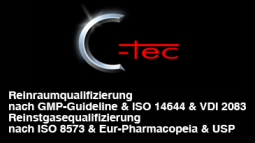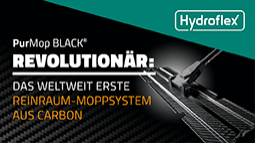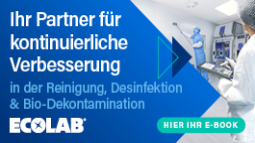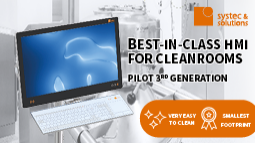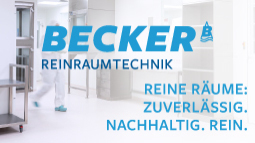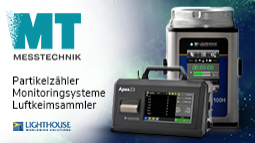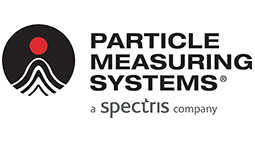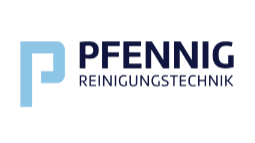- Datum:
-
- Seminar
European Aseptic Technologies & Annex 1 Conference - Part of PharmaCongress 2025
- Veranstaltungsort:
- Wiesbaden
- Veranstalter:
- CONCEPT HEIDELBERG GmbH
Pain Points with Annex 1
Quality Risk Management in Aseptic Manufacturing: Reasonable Use
Dr Ingrid Walther, Pharma Consulting Walther
Sterile Filtration – PUPSIT and Requirements beyond
Dr Frank Sielaff, Regional Authority Darmstadt
- Requirements of Annex 1
- Expectations on PUPSIT
- Expericences from inspections
Practical Application of setting up an annual Contamination Control Strategy (CCS) Assessment
Ruben van der Galiën, GE HealthCare
Dr Prachi Sawant Raschdorf, GE HealthCare
- Practical application of setting up an annual CCS assessment within a pharmaceutical sterile and/or aseptic manufacturing company
- Annually assessment of the effectiveness of a CCS
- Keeping the CCS up to date by reflecting the current state of all sources of contamination
- Room for continual improvement
"RTU + RTS Materials – GMP Requirements for the Pharmaceutical Manufacturer and Supplier Qualification”
Dr Rainer Kahlich, Local GMP Authority of Baden-Württemberg Tübingen
- Effects of the Annex 1 revision
- Expectations for supplier qualification
- Incoming goods inspection and handling at the pharmaceutical manufacturer
- Benefits of certification according to ISO 15378
Contamination Control Strategy of RTU-Packaging Systems in relation to Annex I
Horst Koller, HK Packaging Consulting
Katharina Golly, Novartis Pharma
- Product Containers & Closures
- Sterilization Validation
- Transport Simulation
- Aseptic Processing
Steam Sterilized Isolators solve indirect Product
Contact Surface Dilemma (bowls/lanes)
Dr Geert Vandenbossche, C&E Solutions BV
- The new Annex-1 revision requires sterilization of all surfaces that touch critical components
- Possible solutions:
- Snap-on caps
- Offline autoclaving
- In-situ SIP of critical component contact items
Fill & Finish of various Ready-to-Use Containers from clinical late Stage until commercial Launch of Biologicals through to high-potent Products
Stylianos Sampanis, Sanofi-Aventis Deutschland GmbH
Ralf Wagner, Optima pharma
- Filling line for a maximum of flexibility and various product requirements
- Technologies for minimizing product loss and solutions for reduced change over times
- Robotic applications for various requirements in isolator environment
- Clinical late stage applications until commercial launch
Accelerating Pharmaceutical Manufacturing: A Case Study of entering Syringe and Cartridge Fill-Finish Production
Henning Austermann, Siegfried Hameln
Klaus Ullherr, Syntegon Technology
- The seamless integration of a state-of-the-art fill finish solution within an existing production environment
- Key technical features of the machine
- Packstyle flexibility, enabling rapid adaptation to changing market requirements
- No-touch-transfer system ensuring sterility and contamination control
- 100% in-process control (IPC) enhancing product quality and compliance
- Integration of in-air isolator
- Operational efficiency with peristaltic pump with single-use filling systems
- Implementation of Annex 1 requirements in practice
H2O2 Ingress Study Approach for Isolator Decontamination of the AT-Vials
Dr Maria Loos, Johnson and Johnson
Adrian Keller, SKAN
- Study objective: To investigate H2O2 entry into AT vials and its effects on the filled product
- Study design: Details of the experimental setup and control groups
- Results: Interesting findings and conclusions
- Implications: Possible effects on product quality and safety
Container Closure Integrity Test
Luigi Scaffidi, Boehringer Ingelheim Pharma
- Regulations / Guidelines / Recommendations
- Overview Test procedures (in development and production)
- Norm leakage
- Case Study Boehringer Ingelheim
HIGHLIGHT
Next Generation of Aseptic Filling: Highest Flexibility meets latest Regulations of Annex 1
Sébastien Trichot, Sanofi
Edgar Bauer, Bausch + Ströbel
- Flexible production solutions in aseptic filling
- RTU (ready-to-use= packaging has become standard in pharmaceutical production
- High flexibility brings new challenges
- Sterile transfer into the cleanroom
- Aseptic handling at the facility
- Inspection Processes like 100% IPC
- Sealing process
- Flexibility within dosing systems
Flexible Production for Parenterals, from Vision to Execution
Dr Friedrich Haefele, Formerly Boehringer Ingelheim
- Evolutionary and revolutionary aspects in innovative facility design for parenteral products
- Aseptic filling & closing in gloveless isolators or better closed systems
- Unit operations for aseptic filling & closing
- Unit operations of aseptic lyophilization and/or coating of biomolecules
- Unit based 100% IPC and parametric release

CONCEPT HEIDELBERG GmbH
Rischerstraße 8
69123 Heidelberg
Deutschland
Telefon: +49 6221 844415
Telefax: +49 6221 844464
eMail: info@concept-heidelberg.de
Internet: http://www.gmp-navigator.com/
